Everyone can enjoy a nice refreshing cold cup of coffee. Thanks to iced coffee and cold brew, cold cups of coffee have become mainstream drinks, and their popularity continues to increase yearly.
So, what’s the difference between iced coffee and cold brew?
We’ll cover everything you need to know about the two coffees in the explanations below.
Table of Contents
What is Iced Coffee?
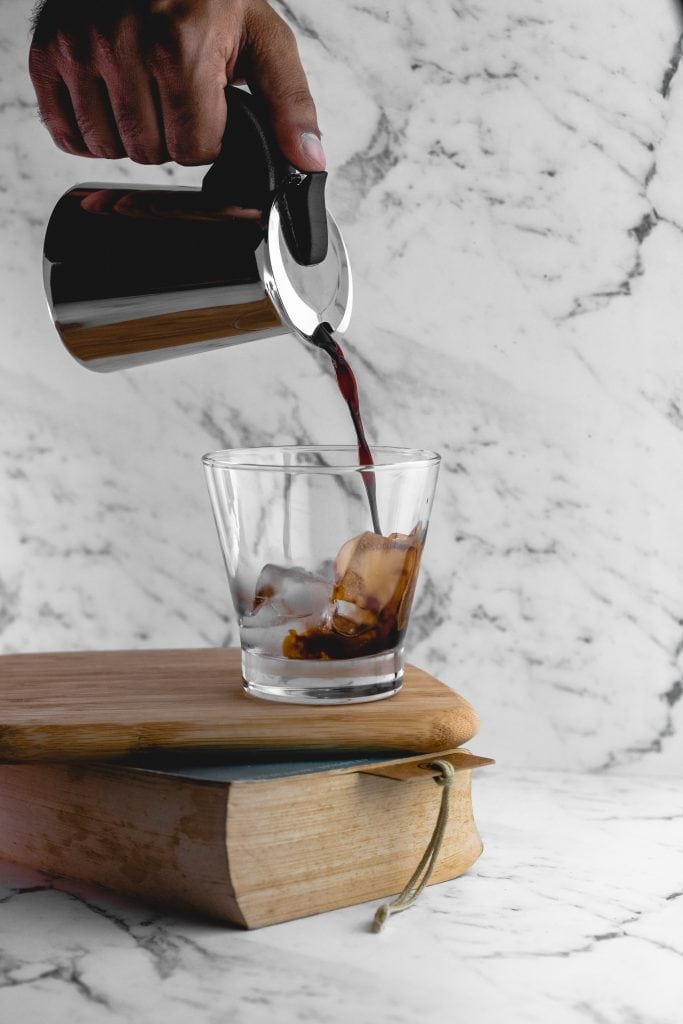
Even if you haven’t tried iced coffee yet, you may know you can get it from espresso or any brewing method. It’s a trendy type of cold coffee drink served over ice. It is common in the summertime, and people make it by adding flavored syrup, milk, and ice cubes to a hot coffee.
As a result, iced coffee is a diluted form of regular brewed coffee, so it’s better to make a more potent brew before adding ice. Like many coffee drinks, you can make it black, with milk, or without sugar.
What is Cold Brew Coffee?
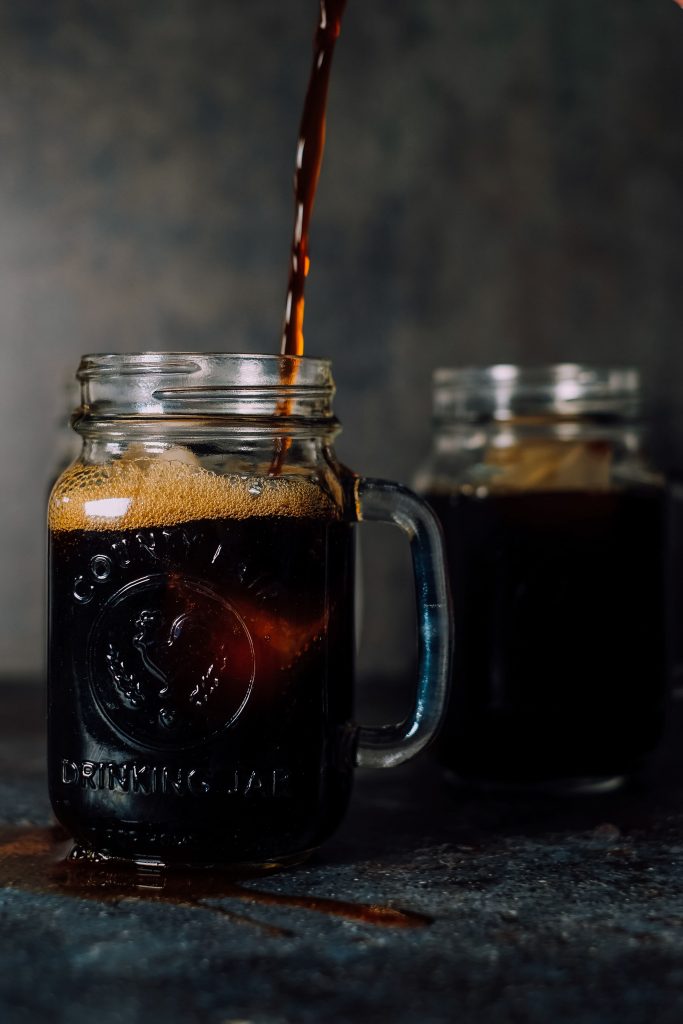
Cold brew coffee is made by brewing coffee with cold water. You can brew coffee by slowly steeping coffee grounds in cold water for 12 to 24 hours. The result is a smooth, sweet, and strong cup of coffee.
If you have tasted cold brew, you might already noticed that the slow extraction doesn’t bring some of the oils and flavor from coffee as hot water does. As a result, the taste is very different.
What is nitro cold brew?
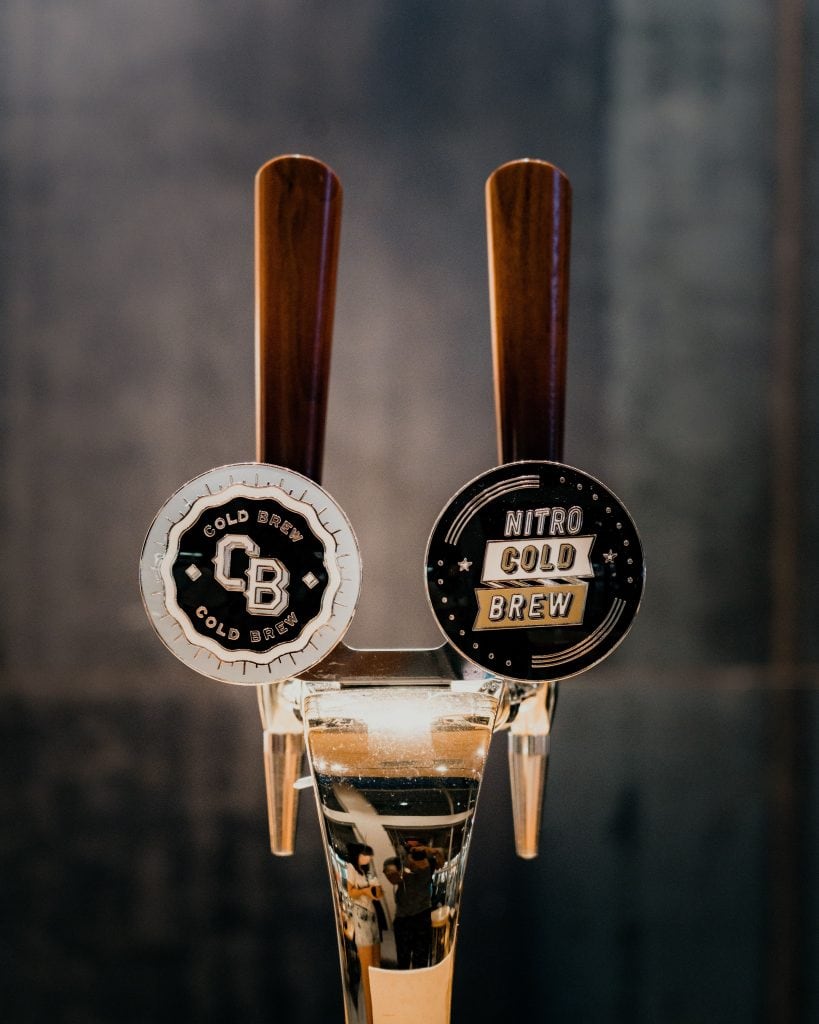
Nitro cold brew is cold brew coffee infused with nitrogen. Making nitro cold brew coffee requires preparing cold brew in advance. Then, you can infuse it with nitrogen using a special keg -or a whipped cream dispenser. If you’re curious about the gear you need for nitro cold brew, I wrote a review of the best nitro cold brew coffee makers.
Some coffee shops already offer nitro cold brew, and some brands offer canned, ready-to-drink. Starbucks made it famous, and nitro cold brew is among the most expensive drinks on the menu.
The nitro cold brew coffee has a distinctive texture and mouthfeel. Visually it resembles a stout beer, with its foamy, dark, and refreshing texture. In terms of taste, it displays low bitterness and acidity depending on the coffee beans. It can show a delightful aromatic profile.
What are the differences between cold brew and iced coffee?
Iced coffee and cold brew coffee differ in the making and the results. The main differences in terms of the process are grind size, brewing time, brewing device, brew ratio, and water temperature.
Iced Coffee vs. Cold Brew Coffee: Preparation Differences
Different results usually mean different processes. Understanding the differences between iced coffee and cold brew has much to do with preparation factors and methods.
Grind size
Depending on the device and brewing method, you can make coffee using almost any grind size. In contrast, most people recommend using a coarse grind size for cold brew.
The main reason for using a coarse grind size is the slow extraction process and low water temperature. Using medium grounds is still possible, but you might obtain excessive bitterness and other unpleasant flavors. It’s relatively harder to find coarser coffee grounds in the market. Still, you can always ask your favorite barista to help you. Another good option is to grind coffee at home or get coffee grounds for cold brew online.
Alternatively, coffee for French press can be a good match for cold brew too.
Brewing time
Cold-brew coffee takes hours to make. It can take up to 24 hours. Cold-brew coffee brewing involves steeping ground coffee in water for an extended period. Some recipes call for soaking the grounds in cold water overnight, while others suggest several hours.
Recent scientific research suggests that after 7 hours, the extraction makes little to no difference.
Iced coffee, on the contrary, takes a few minutes. Even using a French press will take around ten minutes, so brewing time is quite a thing, especially if you want to make it at home.
Brewing device
The only devices capable of making cold-brew coffee and iced coffees are the French press and the Aeropress. Some companies offer cold brew coffee makers, but many seasoned coffee enthusiasts advise saving on useless gear. Making cold brew coffee is very simple; you can use a sealed bottle and filter.
If you don’t have a French press or an Aeropress at home, getting a cold brew coffee maker isn’t a terrible idea.
In contrast, you can make iced coffee with any conventional brewing device. Drippers, French presses, Moka pots, and even espresso machines can produce the base for iced coffee. In all cases, it’s necessary to consider that ice will melt in contact with hot coffee. For this reason, it’s better to brew a more concentrated cup of coffee unless you’re brewing espresso.
Brew ratio
It’s common to prepare cold brew coffee concentrate to serve diluted. For this reason, while pour-over coffee goes around 1:16 and French press and Moka pot around 1:12, cold brew coffee tends to be around 1:9.
Some people prefer to make cold brew “ready to drink.” In these cases, they use ratios similar to regular coffee. That said, it’s more common to find a stronger concentration of coffee in cold brew than in iced coffee.
Water temperature
Using cold water to make coffee came as a surprise for most of us. For decades, iced coffee was the evident option for the summer or any other moment we wanted a refreshing coffee drink.
Cold-brew changed the rules. While many people thought it was a fad, it’s here to stay. Slow extraction using cold water provides a completely different aromatic profile and offers more delicate flavors.
The main difference between iced coffee and cold brew coffee is that the first uses hot water and then cools through added ice. Cold brew coffee, in contrast, uses cold water to extract coffee from the start.
Brewing process: Wrap up
The brewing process is the most significant difference between iced coffee and cold brew. Iced coffee is brewed hot, and ice is added afterward to make it a cold drink.
The process is similar to brewing regular hot coffee. For example, if you brewed a traditional pot of drip coffee or made a hot French press coffee batch, you could add ice to the coffee brewed from either of those batches. Then, voila, iced coffee is ready to drink! It isn’t too complicated of a process.
In contrast, cold brew is a little more complex than that. Because cold brew is made with cold water rather than hot water, it takes more time to acquire taste and aroma. These brews can steep for anywhere from 12 hours to 24 hours. Most people believe the longer the brew, the stronger the flavors, but it isn’t like that.
Research suggests that cold brew extraction accomplishes the best results around 14 hours.
Cold brew is made in lots of different ways. Some people like using a Toddy Cold Brew System, which has large plastic cylinders. You can add coffee grounds and water to these cylinders, but there has to be a way to separate the coffee grounds from the coffee. This can be done using a filter to hold the coffee while it steeps. Another option is to use a mesh to strain the grounds. It’s important not to let these grounds mix into your coffee. Otherwise, you’ll have some black sludge at the bottom of your cold brew mixture.
Cold-brew coffee vs. Iced coffee: The Cup
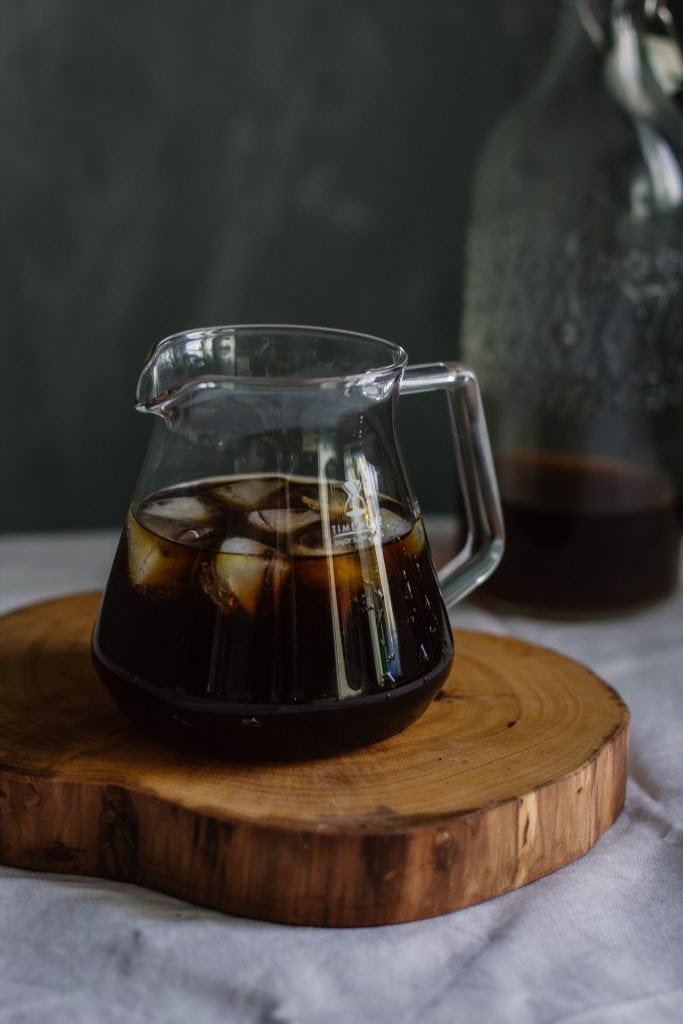
The differences in cold brew and iced coffee extraction processes impact the results. Let’s dig deeper to learn more about what changes, how, and why!
Differences in Caffeine
Many aspects alter the caffeine content in cold brew and iced coffee. Most of the time, cold brew will have more caffeine content because it’s more concentrated. But it isn’t that straightforward.
The variables that determine caffeine content are:
- Brew ratio
- Serving size
- Coffee beans
- Water temperature
- Grind size
- Brewing time
The brew ratio is pretty straightforward. If you add more coffee grounds, you’ll get more caffeine. Now, this is crucial too, when it comes to the serving size. An espresso, for instance, is very concentrated, but it’s a tiny serving of coffee. Therefore, you have more caffeine in an 8 oz mug of drip coffee than in a single shot of espresso. The same happens with cold brew and iced coffee.
Coffee beans have different caffeine contents depending on many other factors. The most significant is the coffee species. Robusta coffee beans have more than double the caffeine content of Arabica. For this reason, blends using Robusta will have a lot more caffeine than 100% Arabica blends.
As I explained above, water temperature, grind size, and brewing time play a role in coffee extraction. One of the most relevant chemical compounds of coffee grounds is caffeine. For this reason, any factor enhancing extraction will produce a higher caffeine content as a result.
Differences in Flavor
Consider trying the same coffee beans to compare flavors fairly to prepare iced coffee and cold brew. You’ll notice that cold brew coffee has minimal acidity and bitterness when compared directly. The taste is smoother and slightly sweeter than iced coffee.
When you brew hot coffee, it quickly dissolves many chemical compounds in coffee, extracting flavors that won’t come out quickly using cold water. Additionally, the coffee temperature has a direct impact on our palates. It happens to coffee and everything we eat and drink, for that matter.
Myth alert: many coffee enthusiasts claim that cold brew is less acidic. As such, it’s better for people with stomach issues. However, there is no scientific evidence to back up this claim. On the contrary, a scientific study on the matter suggests that cold brew doesn’t significantly differ in acidity compared to hot brewed coffee.
Differences in Price
Iced coffee typically costs between $2 and $3, while cold brew coffee can cost up to 4$ in most coffee shops.
Cold brew coffee is more expensive than iced coffee because it takes longer to brew, and many cafés keep them refrigerated.
Does it worth it? Well, operational costs aren’t everything. Bear in mind that if you want to save some money, making cold brew coffee at home isn’t too difficult! Cold-brew has a distinctive flavor, and if you like it, you can pay with confidence.
Which lasts longer, cold brew or iced coffee?
I found mixed opinions here but no scientific evidence to support them. While some experts claim that cold-brew lasts longer in the fridge, others argue that there isn’t any difference between iced coffee and cold brew coffee in this area.
If there is any consensus around this, cold brew coffee and iced coffee can last about a week in the fridge. I can’t entirely agree with most people here because I care a lot about freshness. For this reason, I recommend brewing in small batches. In doing so, you’ll drink coffee as fresh as possible.
Still, coffee freshness isn’t a matter of food safety for me. It has to do more with taste and the pleasant aroma of coffee.
Can you freeze cold-brew coffee?
Freezing can be a sound alternative if you feel more inclined to prepare cold brew coffee in advance. The thing is that the freezer can add odors to the coffee aroma. To avoid it, some people recommend using an ice cube tray to freeze coffee and then ‘putting the coffee cubes in an airtight container.
How to make cold-brew coffee at home
Print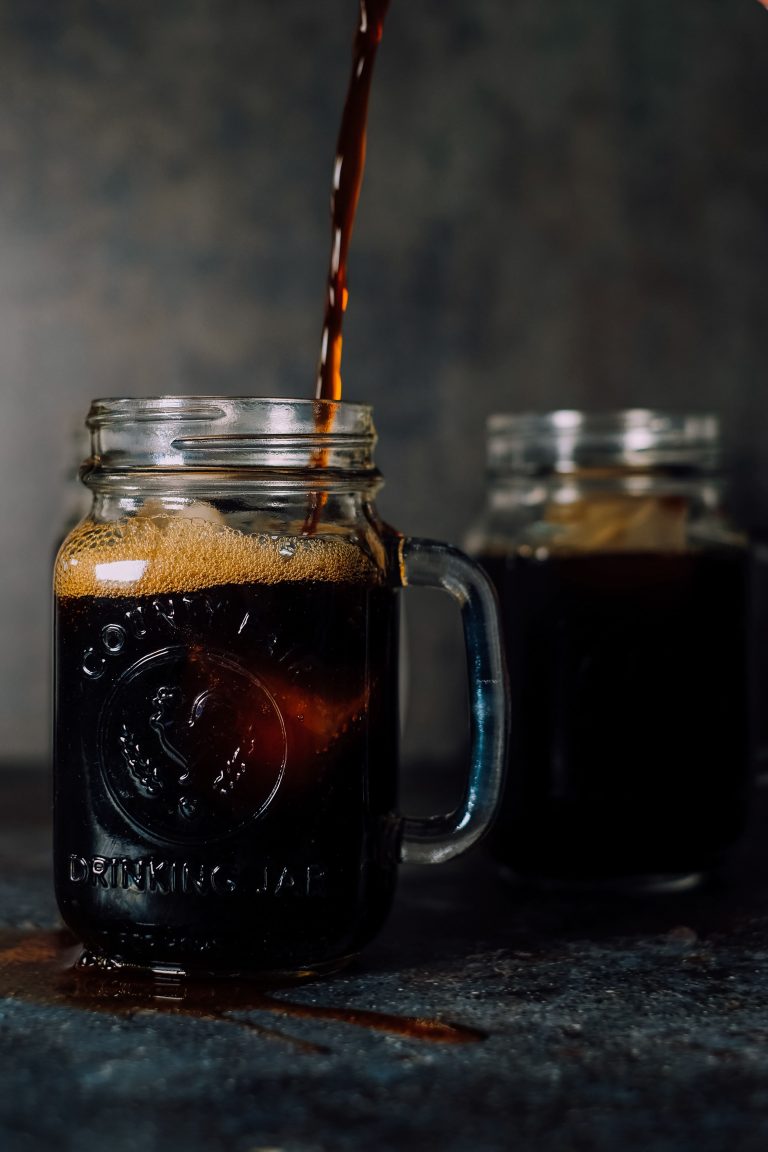
Easy Cold Brew At Home
Cold brew can be simple and delicious. Follow this simple recipe to get a refreshing cold brew concentrate at home!
- Total Time: 14 hours
- Yield: 4 cups 1x
Ingredients
- 100 grams of medium-coarse coffee grounds
- 800 grams of water.
Instructions
- Add 100 grams of medium-coarse coffee grounds to a pitcher.
- Pour 800 grams of cold water.
- Mix coffee grounds and water, ensuring that all the coffee is wet.
- Steep coffee grounds at room temperature for 14 hours.
- Strain using a conic dripper and a paper filter into a mason jar or smaller container. Alternatively, you can use a strainer and a bowl, but it’s more likely to let sediments go through.
- Stick it in the fridge to enjoy it cold!
Notes
Nutrition Facts calculated using the Verywell Recipe Nutrition Calculator.
- Prep Time: 14 hours
- Category: Coffee drinks
- Method: Steeping
Nutrition
- Serving Size: 900 ml
- Calories: 1
- Sugar: 0
- Sodium: 0
- Fat: 0
- Saturated Fat: 0
- Unsaturated Fat: 0
- Trans Fat: 0
- Carbohydrates: 0
- Fiber: 0
- Protein: 0
- Cholesterol: 0
I recommend experimenting with your favorite coffee to make the result more familiar for you. Making cold brews at home doesn’t require unique ingredients or equipment. It’s better to have coarse coffee grounds, but some people can use a regular medium grind size. If you aren’t happy with medium grind size, try coarser grounds.
If you don’t have a conic dripper and paper filters at home, you can use a clean strainer to filter the coffee grounds.
Final thoughts
Iced coffee is perfect for more conventionally-minded coffee lovers since it offers more familiar flavors. Cold-brew coffee is a more complex and tasty version of iced coffee. It displays a unique taste that doesn’t match all palates, but it’s worth trying.
What’s your favorite? Cold-brew coffee or iced coffee? How do you like them? Let me know in the comments below, and share your top tips!


